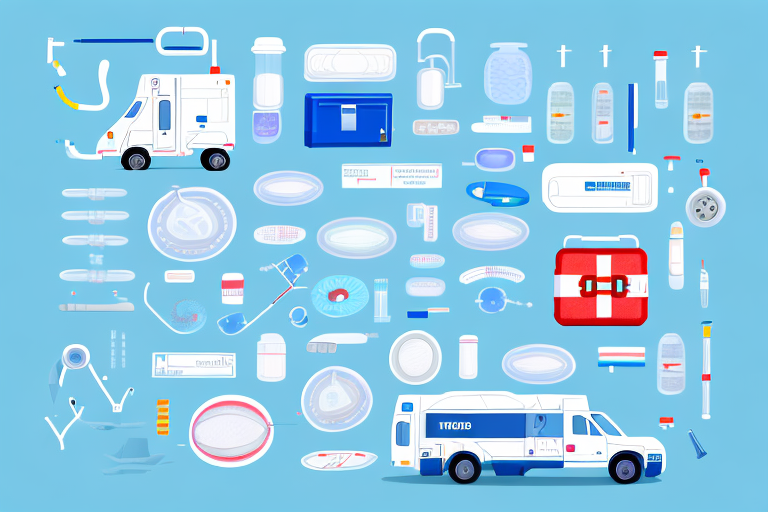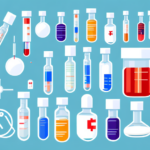Understanding the Critical Role of Blood Sample Transport Systems
Blood sample transport systems are indispensable in modern healthcare and medical research, ensuring that samples are safely and efficiently moved from collection points to laboratories or clinics for analysis. The integrity of these samples is paramount for accurate diagnostics and effective treatment planning.
Maintaining Sample Integrity
Ensuring the stability of blood samples during transit is crucial. Factors such as temperature fluctuations can compromise sample quality, leading to inaccurate test results. Advanced transport systems incorporate temperature control mechanisms to maintain optimal conditions throughout the journey.
Accurate Diagnosis and Timely Treatment
Reliable transport systems facilitate the swift delivery of samples, enabling timely diagnostics. For instance, delays in transporting samples for cancer diagnostics can impact treatment outcomes. Efficient transport systems thus play a vital role in patient care and disease management.
Evolution of Blood Sample Transport Systems
The transportation of blood samples has evolved significantly over the years, adapting to advancements in technology and the growing demands of the healthcare industry.
Historical Developments
Initially, blood samples were transported using simple containers, often by hand or traditional means like horseback. The advent of automobiles marked a significant improvement, allowing for longer-distance transportation.
Modern Innovations
Today, blood sample transport systems are highly sophisticated, featuring insulated containers, temperature-controlled packaging, and electronic tracking systems. Innovations such as drones and automated vehicles are being explored to enhance speed and reach, especially in remote areas.
Types of Blood Sample Transport Systems
Various transport systems are designed to meet specific needs, each offering unique features to ensure the safe delivery of blood samples.
Refrigerated Transport Systems
These systems maintain a consistent temperature range, typically between 2°C and 8°C, essential for preserving sample integrity. Equipped with temperature sensors and alarms, they are ideal for transporting samples over long distances.
Insulated Containers
Perfect for short-distance transport, insulated containers protect samples from external temperature variations. They are lightweight and portable, making them suitable for routine sample deliveries.
Specialized Transport Vehicles
Used by emergency medical services and blood banks, these vehicles are equipped with refrigeration units and backup power supplies. They ensure that samples remain stable and secure during transit.
Drone-Based Transport Systems
Emerging as a promising solution, drones can rapidly deliver blood samples to remote or inaccessible locations. While offering speed and efficiency, challenges such as payload limitations and regulatory compliance remain.
Selecting the Appropriate Blood Sample Transport System
Choosing the right transport system depends on several factors, including the volume of samples, distance of transport, and the specific requirements of the samples.
Assessing Transport Needs
- Sample Volume: High-volume labs may require larger, specialized transport solutions.
- Transportation Distance: Long-distance transport necessitates robust temperature control and tracking capabilities.
- Sample Sensitivity: Highly sensitive samples may require advanced preservation technologies.
Compatibility with Sample Types
Different types of blood samples may have varying transportation requirements. For instance, samples containing infectious agents need specialized handling and packaging to prevent contamination.
Best Practices for Blood Sample Handling and Transport
Adhering to best practices ensures the accuracy and reliability of blood sample tests.
Proper Sample Collection
Using sterile equipment and correct collection techniques minimizes contamination risks. Immediate initiation of the transport process helps preserve sample quality.
Accurate Labeling
Labeling samples with essential information such as patient name, date of birth, and sample type prevents mix-ups and ensures traceability.
Leak-Proof Packaging
Utilizing leak-proof containers prevents spills and contamination, maintaining sample integrity throughout transit.
Compliance with Regulations
Following guidelines set by authorities like the Clinical Laboratory Improvement Amendments (CLIA) and the International Air Transport Association (IATA) ensures safe and standardized transportation practices.
Overcoming Challenges in Blood Sample Transport
Despite advancements, several challenges persist in the transport of blood samples. Addressing these issues is critical for maintaining sample integrity and ensuring reliable test results.
Temperature Fluctuations
Inconsistent temperatures can degrade samples, compromising test accuracy. Implementing real-time temperature monitoring and fail-safe cooling systems can mitigate this risk.
Transportation Delays
Delays due to traffic, weather, or logistical issues can impact sample quality. Developing contingency plans and utilizing rapid transport methods like air freight can help reduce delays.
Sample Contamination
Strict adherence to sterilization protocols and proper handling procedures prevents contamination during collection and transport.
Technological Solutions
Adopting electronic tracking and automated handling systems enhances the reliability and efficiency of blood sample transport.
Innovations Enhancing Blood Sample Transport
Continuous innovations are driving improvements in blood sample transport systems, enhancing safety, efficiency, and accessibility.
Drone Delivery Systems
Companies like UPS and DHL are exploring drone technology to expedite sample delivery, particularly in hard-to-reach regions. [Source: UPS Drone Delivery]
Automated Transport Vehicles
Automated guided vehicles (AGVs) are being developed to streamline the transport process within hospital settings, reducing human error and increasing efficiency.
Advanced Tracking Technologies
Integration of GPS and IoT devices allows for real-time tracking of samples, ensuring transparency and accountability throughout the transport process.
Cost-Effective Strategies for Blood Sample Transport
Implementing a robust blood sample transport system involves careful planning to balance cost with quality and efficiency.
Optimizing Transport Routes
Efficient route planning minimizes transit time and fuel consumption, reducing overall transportation costs.
Volume Management
Consolidating sample shipments can optimize vehicle loads, enhancing cost-efficiency and reducing the carbon footprint.
Utilizing Multi-Use Transport Solutions
Investing in versatile transport systems that can accommodate various sample types and volumes ensures flexibility and cost savings.
Implementing Robust Procedures
Standardizing handling and transport protocols minimizes errors and reduces the likelihood of costly sample degradation or loss.
Conclusion
Effective blood sample transport systems are vital for maintaining sample integrity and ensuring accurate medical diagnostics. By adopting advanced technologies, adhering to best practices, and implementing cost-effective strategies, healthcare providers can enhance the reliability and efficiency of sample transportation. Continuous innovation and adherence to regulatory standards will further drive improvements, ultimately contributing to better patient outcomes and advancements in medical research.






















